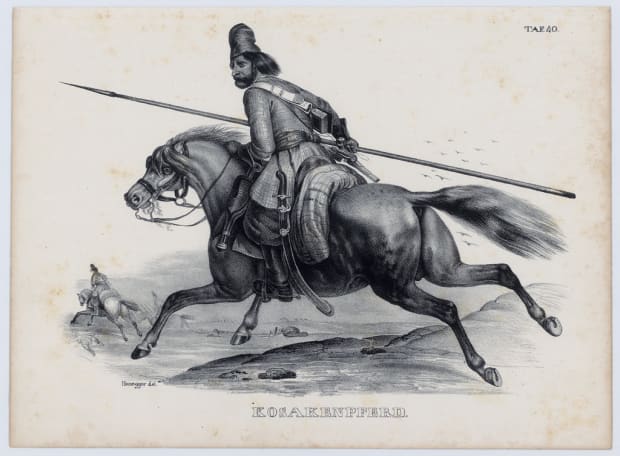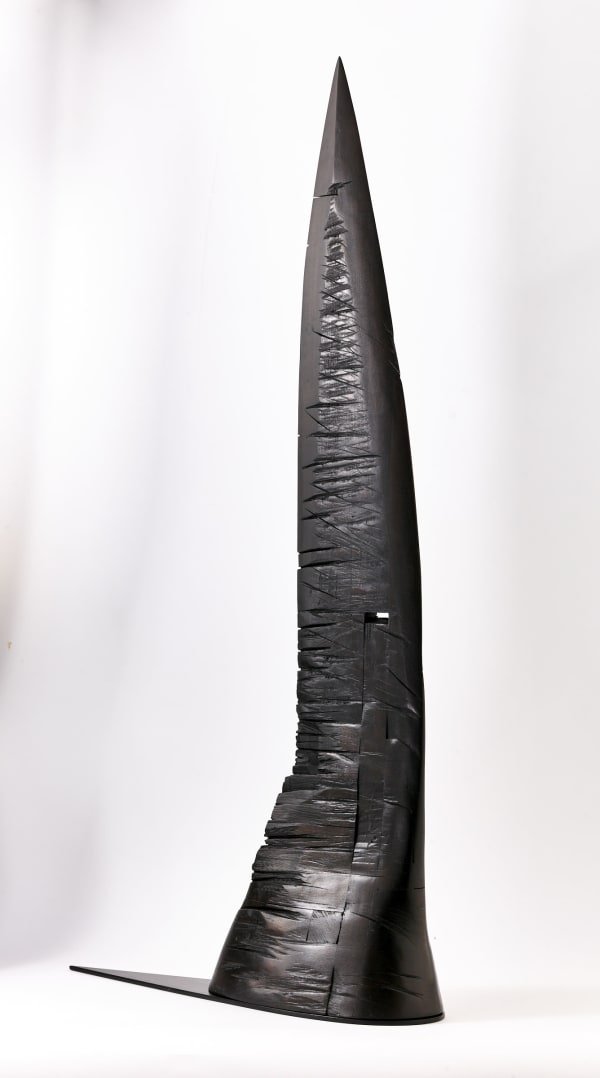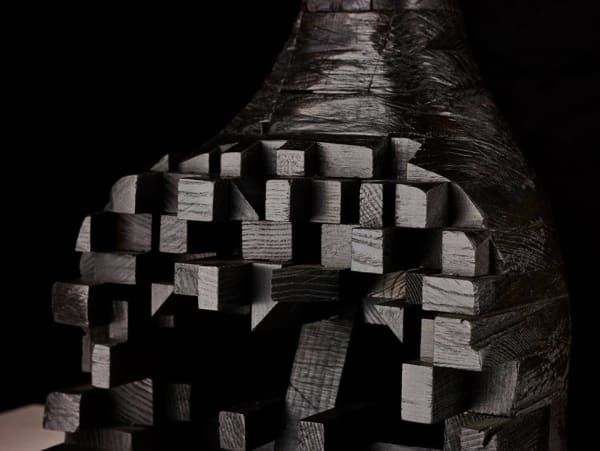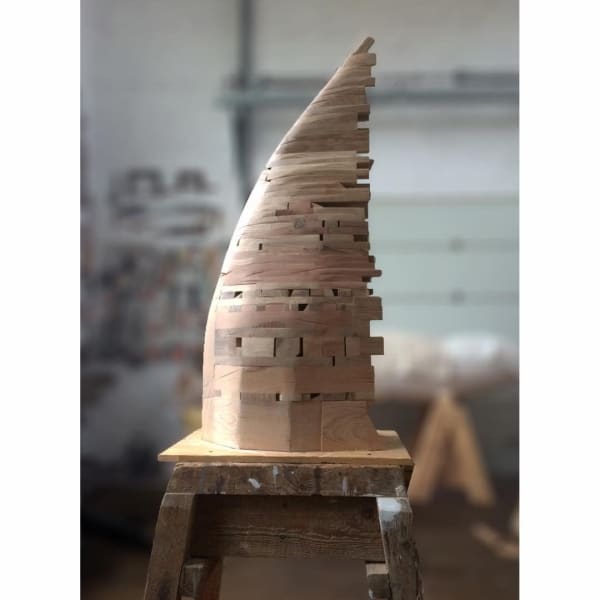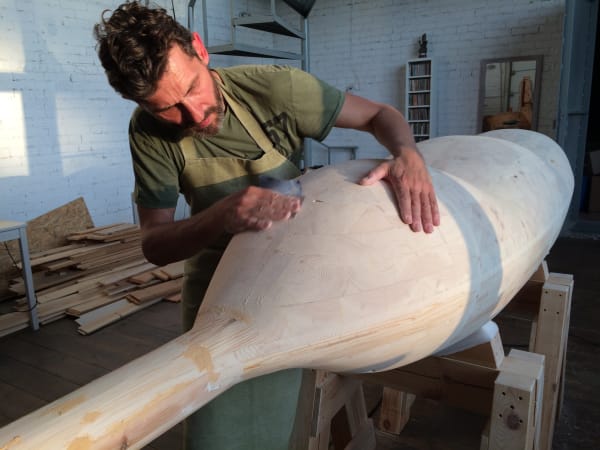The Russian Cossacks are known for living in the empire’s borderlands, settling and defending new territory, and expanding Russia’s inhabited area. The Cossacks were a freedom-loving and warlike people, but they also excelled in farming the land. They brought the advanced farming methods of central Russia to indigenous minorities. In exchange, they borrowed the best traditions of the native tribes, with whom they intermarried and thus enlarged their population. The Cossacks were characterized by courage, esprit de corps, quick wit, and harsh temper.
-

-
“THE COSSACKS ARE A PEOPLE WHO WERE, FOR ALL INTENTS AND PURPOSES, VAPORIZED IN THE 20TH CENTURY. THE CIVIL WAR, DECOSSACKIZATION, DEKULAKIZATION, EMIGRATION, AND STARVATION LEFT NOTHING OF THE COSSACK POPULATION”
NIKOLAI BONDAR, HISTORIAN, ETHNOGRAPHER, PROFESSOR OF KUBAN STATE UNIVERSITY
The Pchelins trace their ancestry back to the Azov Cossacks who lived in the Lower Don River Basin. The history of Cossack settlers goes as far back as Kievan Rus, to the 14th century.
Cossacks lived in self-governing communities and intermarried with Turks and Tatars. Valery’s great-great-grandfather Fyodor, a tall, fair-haired, happy-go-lucky man with an impulsive temper, brought a Turkish wife back from one of the Cossack military forays. Fatima (or Zarima) quickly acclimatized to the culture and converted to Orthodox Christianity under the name Arina. Cossacks were Orthodox Christian people, and one had to accept their faith to live in their midst.
Fyodor invested all his money in windmills. The Pchelins remained windmill owners until 1917 and even after the Revolution, but it was the windmill enterprise that eventually brought them to ruin.
Their custom was to build a new windmill for every new male child in the family. The youngest son would stay with the family and inherit his father’s windmill. The ancestral windmill in the village of Sambek, built by Pchelin’s great-great-grandfather, was inherited by the artist’s grandfather Ivan Nikandrovich.
Joining the Army in 1914, Ivan served in the same sotnia unit as his brothers, fighting on the Turkish front. They headed home after the 1917 Revolution, sharing the train car with their horses. The Tsar they had sworn allegiance to was gone, and the country they had fought for was no more. The Armenians begged the Cossack troops to stay: “The Turks will come and butcher us if you leave”. They got on their knees offering eternal hospitality, even dismantled the railway, but the Cossacks were eager to head home to their families and windmills after four years spent in the trenches. They left and the Armenian genocide occurred soon after. For the rest of his life, Pchelin’s grandfather Ivan would express the feeling of guilt that remained with him.
Back home Ivan got married, and took part in some fighting during the Civil War. The business went well during the New Economic Policy (NEP) era of the 1920s. Ivan took out a loan from a Belgian bank (foreign banks were able to lend money to private entrepreneurs in the new Soviet Republic) to upgrade his old windmill in the hope of many prosperous years to come. Unlike many of his fellow Cossacks, Ivan did not share the radical anti-Soviet sentiment and never fought for the White movement. This would save his life but not his property, which was nationalized in 1930.
-
DECOSSACKIZATION
BY ANALOGY WITH THE TERM DEKULAKIZATION, THE DEPRIVATION OF PROPERTY AND PERSONAL FREEDOM ENFORCED ON THE KULAKS (WELL-TO-DO PEASANTS WHO HIRED LABORERS AND OWNED LAND, FARM ANIMALS, AND HOUSES), DECOSSACKIZATION INCLUDED NOT ONLY THE IMPOVERIZATION AND EXILE OF THE COSSACKS, BUT ALSO THE ERASURE OF COSSACK IDENTITY, CULTURE, AND CUSTOMS. IT WAS ESSENTIALLY THE POLITICAL SUPPRESSION OF THE COSSACKS. -
MY GRANDFATHER NEVER TOLD ME HOW HE HAD ESCAPED. ALL I KNOW I GOT FROM MY GRANDMOTHER. I HEARD MAYBE A DOZEN WORDS FROM MY GRANDFATHER MY WHOLE LIFE. HE WAS ALWAYS PREOCCPIED AND WITHDRAWN, LIKE A MAN WHO KNOWS SO MUCH THAT THE DAILY GRIND IS SIMPLY IRRELEVANT.
VALERY PCHELIN, SCULPTOR
Valery’s grandfather was arrested as a kulak who used hired labor at his windmill. Ivan was sentenced to 10 years of forced labor logging trees in Kotlas, near Arkhangelsk in the Far North. His wife and their four children were sent into exile to the steppe around the River Sal. She was not allowed to bring anything except a couple of icons. She barely had time to place her youngest son, a year old, in her sister’s care. Her oldest son died during the trip. She finally arrived at the destination with two sons, but soon managed to escape. She secretly returned to Rostov to live with her relatives.
Ivan Nikandrovich spent 18 months felling trees before finding a way to escape. He could have escaped to England by hiding under some logs loaded onto a British cargo ship at Arkhangelsk. The Brits would not have minded – they commiserated with the prisoners. But Ivan believed that the Soviet “nightmare” was not for long, that justice would soon be restored and he would be able to reunite with his family.
Eventually he and a friend escaped. Ivan found someone else’s ID and made his way to Donbas, where massive mining development was underway. They needed workers so much in Donbas they could not be bothered to check people’s backgrounds.
An excellent carpenter as well as miller, Ivan got a job as a rigger and soon earned a promotion to brigade leader. When a new mine is built, the riggers are the first to go in there to build the frame that will prop up the roof. Mine rigging is a dangerous job that requires courage and concentration. Ivan’s Cossack background served him well.
Donbas was in the same region as Ivan’s hometown of Rostov. He had to be careful lest he be recognized: Ivan shaved off his moustache and his trademark Cossack forelock. He sent a missive to his wife with a reliable messenger. She and their two sons soon reunited with Ivan in Donbas.
Officially a convict’s wife, Valery’s grandmother spread the word that she had not heard from her husband in a long time, and had found a new man in the meantime. But how come the kids looked so much like this new man? Well, that’s because this new man looks a lot like her husband. He is the same type of man she always falls for, as simple as that.
One time Ivan ran into a former fellow villager in the marketplace, and the man recognized him. Ivan had to leave his job immediately and the family moved to a different community with a different mine. They would go through four more emergency moves like that in the years to come. Valery’s grandfather lived on the run until the Nazi invasion in 1941.
No one cared who he was during wartime. Ivan was drafted and served with a logistical unit that shipped food supplies to the battlefront. Ivan was 50 and too old for active service at that time. Once a huge grain supply came in as battles were raging around Rostov, but there was no facility to grind it into flour. They needed someone who knew how to repair a nearby windmill, so Ivan came forward. He would mill flour for the troops on the front for the rest of the war. He brought his family over and built a house.
When Stalin died in 1953, Valery’s grandfather did not wait for the government to exonerate him. He simply moved back to Kuban and reclaimed his real name. Authorities were no longer after him, but Ivan remained on guard all his life nonetheless.
-
SVETLANA GRIDCHINA, GALLERIST:
Remaining true to one’s identity and one’s ancestry can be a heavy burden to carry, but it is also a great joy. It is inspiring that Valery Pchelin has found it in him to accept and process the difficult parts of his ancestral history and move on, move forward. Pchelin remains connected with his ancestral tradition. His heritage manifests in the material he has chosen for his Drifters, in the stories he tells in his works, and in the path he has chosen as an artist.
I look at Pchelin’s works with a different pair of eyes now that I’ve heard the story of his Cossack ancestors. Now I see shapes resembling horses or oxen in these essentially abstract works, which now appear to me as symbols of an arduous but victorious overcoming of adversity on the path towards self-discovery. I am delighted to share the story with you.
-
Drifters
-
More about Valery Pchelin
-

Line/block. Valery Pchelin
16 February - 9 March 2021The Drifters, what are they -

Valery Pchelin. Craftsmanship
16 February - 9 March 2021Как Валерий Пчелин делает своих дрифтеров -

Valery Pchelin. The Meaning Of The Drifters
16 February - 9 March 2021Объекты Валерия Пчелина, дрифтеры, несут собственные смыслы и раскрывают внутренний мир наблюдателя
-
-
Want to know more about the works? And come visit us.
